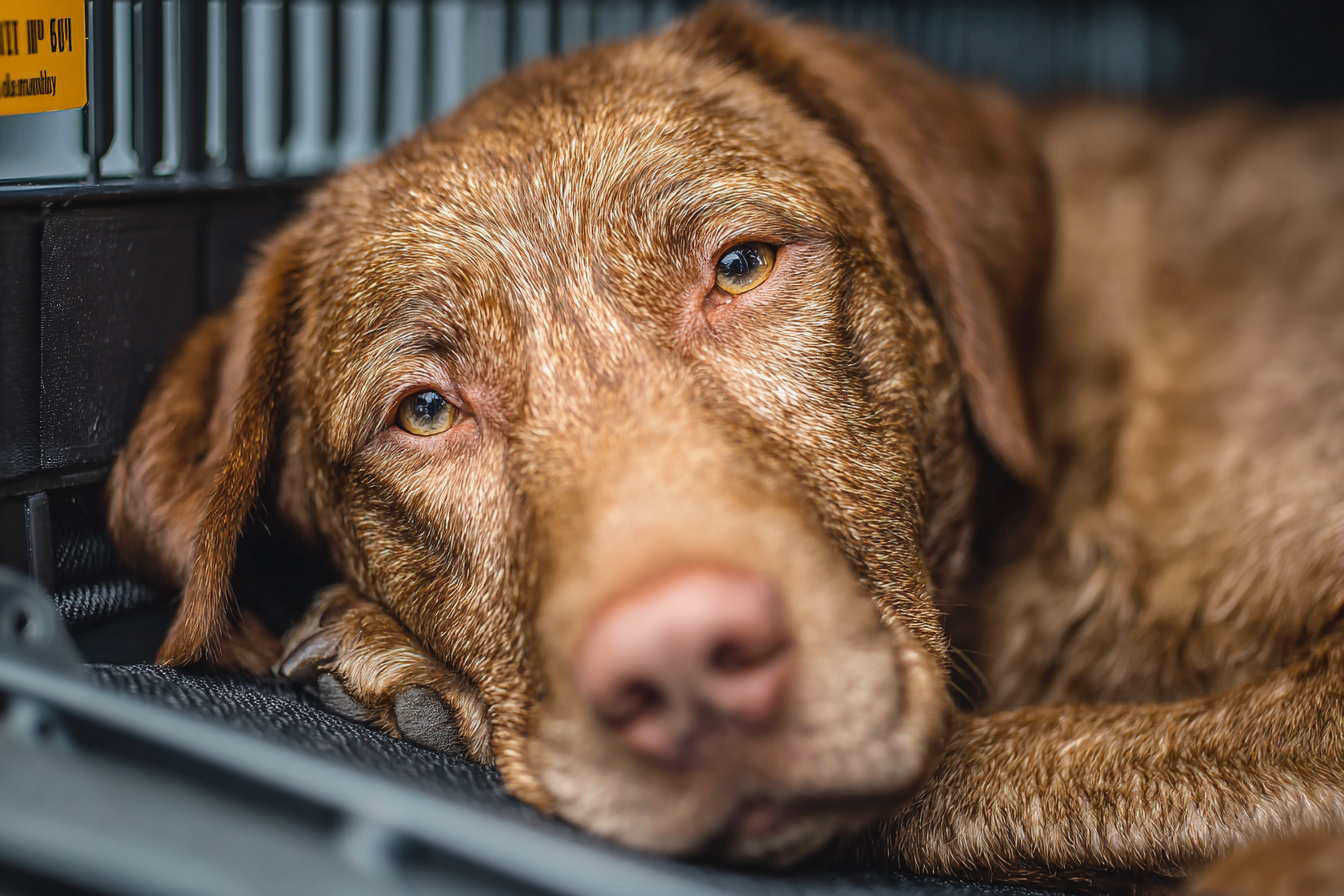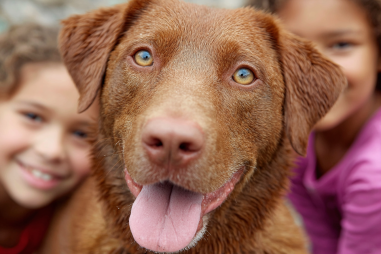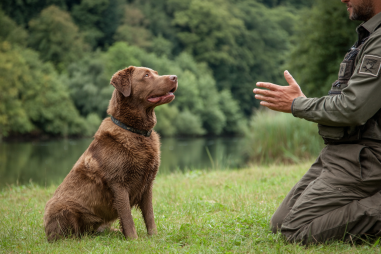Crate training is an invaluable tool when raising a Chesapeake Bay Retriever, offering a safe haven for your dog and making day-to-day life easier for you. This breed is known for its intelligence, loyalty, and energy, so introducing a crate in a positive and gradual way can help your canine companion feel secure and comfortable. In this guide, we will walk you through the basics of crate training your Chesapeake Bay Retriever, ensuring a smooth transition and a happy, well-adjusted dog.
Benefits of Crate Training
Crate training offers numerous benefits for both dogs and their owners. For a Chesapeake Bay Retriever, a crate can serve as a cozy den-like space, providing a sense of security and a place to retreat to when they want some quiet. It helps with house training by teaching bladder and bowel control, as dogs instinctively avoid soiling their sleeping area. It also prevents destructive behavior when you are not able to supervise, which is particularly helpful with an energetic breed like the Chesapeake Bay Retriever.
Additionally, crates make traveling safer and less stressful for dogs. Whether it’s a short trip to the vet or a longer journey, a familiar crate creates a consistent environment. Crates also ease any transitions, such as moving homes or introducing new routines, ensuring your dog adapts more quickly. Ultimately, crate training helps to build a respectful routine, fosters independence, and enhances safety for your Chesapeake Bay Retriever.
Choosing the Right Crate
Selecting the perfect crate for your Chesapeake Bay Retriever is an important first step. Because this breed grows to be medium to large sized, you want a crate that is roomy enough for them to stand, turn around, and lie down comfortably. Typically, crates measuring 36 to 42 inches in length are appropriate depending on your dog’s adult size.
Crates come in a variety of materials including wire, plastic, and fabric. Wire crates provide good ventilation and visibility, while plastic crates tend to feel more enclosed and den-like. Fabric crates are lightweight but less durable, so they are best suited for travel rather than everyday use at home.
Look for features like a removable tray for easy cleaning, multiple doors for accessibility, and solid construction. Make sure the crate is sturdy enough to handle the strength and energy of a Chesapeake Bay Retriever to avoid any escapes or damage.
Gradual Introduction Steps
Introducing your Chesapeake Bay Retriever to their crate should be a gentle, positive process. Here’s a step-by-step approach to getting them comfortable:
- Step 1: Make it inviting. Place the crate in a common area where your dog spends time. Add comfortable bedding and some favorite toys inside to create a welcoming environment.
- Step 2: Encourage exploration. Leave the door open and let your puppy or adult dog investigate at their own pace. You can toss treats or kibble inside to lure them in without forcing entry.
- Step 3: Feed meals in the crate. Place your dog’s food bowl inside the crate, so they begin associating it with positive experiences like mealtime.
- Step 4: Gradually close the door. Once your dog is happily going in and out, close the door briefly during meals. Slowly increase the duration the door stays closed while you stay nearby.
- Step 5: Practice short stays alone. When your Chesapeake Bay Retriever is comfortable with the door closed, leave the room for short periods while they relax inside. Reward calm behavior with praise or treats.
Patience is key. Go at your dog’s speed and never use the crate as punishment, which will undermine trust and make crate training more difficult.
Avoiding Common Mistakes
Even well-meaning owners can run into setbacks during crate training. Here are some common pitfalls and how to avoid them:
- Forcing the dog inside. Never push or drag your Chesapeake Bay Retriever into the crate. This creates fear and resistance. Use positive reinforcement instead.
- Using the crate as punishment. The crate should be a safe place, not a time-out zone. Avoid sending your dog to the crate when they are upset or as discipline.
- Leaving the dog in too long. Extended crate time can lead to anxiety and discomfort. Follow guidelines for time — no more than a few hours during the day for puppies, longer for adult dogs but still with frequent breaks.
- Neglecting exercise. Chesapeake Bay Retrievers are energetic. A crate is not a substitute for physical activity and mental stimulation, so ensure daily playtime and walks outside the crate.
- Inconsistent routine. Consistency helps the dog understand when crate time is expected, so stick to a schedule as much as possible.
Using the Crate for Training and Travel
A crate is an excellent tool beyond just providing a safe space at home. For training, it can aid in housebreaking efforts by teaching your Chesapeake Bay Retriever to control their elimination since they won’t want to soil their den. It also helps manage behavior during events like mealtimes or when guests arrive.
When it comes to travel, a crate makes trips less stressful and safer for both dog and owner. Whether by car or airplane, a familiar crate means less anxiety and fewer chances of escape or injury. Make sure to bring along familiar bedding and toys to keep your Chesapeake Bay Retriever relaxed in the crate during travel.
Troubleshooting Problems
If problems arise during crate training, address them calmly and patiently. Here are solutions to some common issues:
- Barking or whining: This often signals boredom, anxiety, or the need to relieve themselves. Increase exercise before crate time, and make sure the dog is comfortable and doesn’t need a bathroom break.
- Reluctance to enter: Revisit using treats and meals inside the crate to build positive associations. Avoid forcing the dog to enter.
- Chewing or scratching: This can be an expression of stress or boredom. Provide durable chew toys and ensure the dog has sufficient physical and mental stimulation.
- Accidents inside the crate: Ensure the crate is the right size—too large can encourage accidents. Take the dog outside frequently to establish good habits.
If multiple problems persist, consider consulting a professional trainer or a veterinarian to check for underlying behavioral or health issues.
Helping Your Chesapeake Bay Retriever Feel at Home
Getting comfortable with a crate takes time, but your Chesapeake Bay Retriever will learn to appreciate their own special place where they feel protected and relaxed. By choosing the right crate, introducing it positively, and maintaining a consistent, loving approach, you’re setting your dog up for success and a happy relationship with this valuable training tool.
Remember, crate training is just one part of nurturing your dog’s well-being. Combined with exercise, socialization, and affection, it helps your Chesapeake Bay Retriever thrive as a loyal and well-behaved companion in your home for many years to come.







